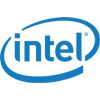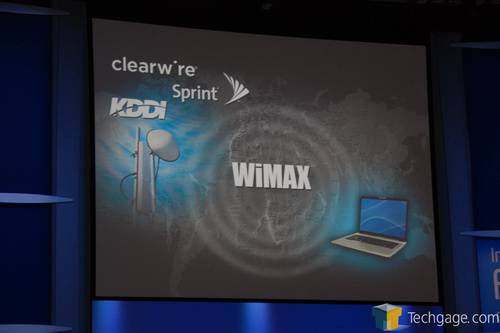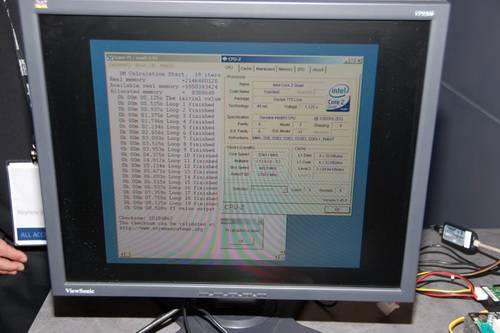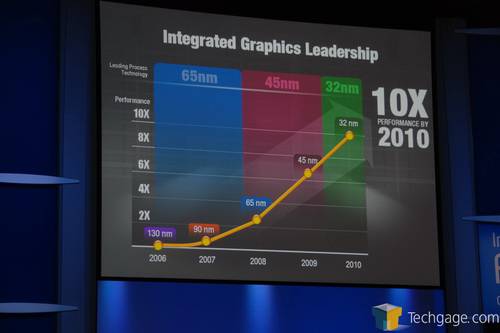- Qualcomm Launches Snapdragon 4 Gen 2 Mobile Platform
- AMD Launches Ryzen PRO 7000 Series Mobile & Desktop Platform
- Intel Launches Sleek Single-Slot Arc Pro A60 Workstation Graphics Card
- NVIDIA Announces Latest Ada Lovelace Additions: GeForce RTX 4060 Ti & RTX 4060
- Maxon Redshift With AMD Radeon GPU Rendering Support Now Available
IDF 07 SF: Paul Otellini Keynote

Paul Otellini opened up the Fall IDF in San Francisco with a keynote focusing on all upcoming technologies including the 65nm to 45nm process, Penryn and Nehalem, power efficiencies, WiMAX, Havok benefits and more.
Page 2 – WiMAX, World Records, Integrated Graphics
WiMAX is a rather new technology, but it’s been deployed all over the world and is currently going through it’s testing stage. Although Paul didn’t delve into the technology a great deal, the premise is simple. WiMAX would be a solution to those who need to connect to wireless access points when not near to a hotspot, or at home. Similar in idea to a cellular tower, if these WiMAX stations have wide adoption, you should essentially be able to connect to the internet regardless of where you are.
One example brought up was of a hiker who planned on doing a BASE jump. He had a USB connected webcam to his helmet and WiMAX capabilities on his handheld device. While they didn’t show any jump live, the idea is that he could record his entire jump while wirelessly streaming the data to his laptop at the bottom of the mountain. Of course there are other uses as well… such as e-mail and the internet. The capabilities are great, and this seems like a technology that would be beneficial to many, especially our Senior Editor, Greg King, who lives in the sticks and is trapped within the confines of dial-up.
In a change of pace, Paul showcased some extreme overclocks being accomplished on a 45nm Yorkfield overclocked to 5.0GHz+. A few world records were broken while using a phase change cooling setup, which was truly as exciting as doing laundry. However, I do admit that an 8 second Super Pi 1 Million is an impressive feat.
Intel’s processors are not their only products to reap the rewards of smaller processes. As you can see from the slide below, between 2006 and this year, Intel moved from a 130nm process to 90nm, with 65nm appearing next year. Following that will be 45nm in 2009 which will match up with Nahalem.
In 2010, both the processor and GPU will be produced on a 32nm process, effectively bumping performance up by 10x when compared to what was offered just last year.
Support our efforts! With ad revenue at an all-time low for written websites, we're relying more than ever on reader support to help us continue putting so much effort into this type of content. You can support us by becoming a Patron, or by using our Amazon shopping affiliate links listed through our articles. Thanks for your support!








